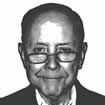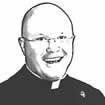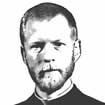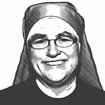
Culture
Thirty-some years ago, I did everything I could to get Dominic DiMaggio elected to the Hall, where I was, and still am, convinced he deserved to be. I regret to say that I fell short in that quest, which I think says more about me than about Dom's worthiness.
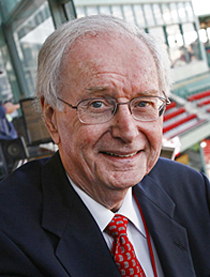
Flavin
The names of the 16 members of the Contemporary Era Baseball Hall of Fame Veterans Committee who unanimously voted on Sunday, Dec. 4, to elect Fred McGriff to the Hall were not made public until only a week before they voted. Their identities were not disclosed in an effort to protect them from being inundated by over-enthusiastic supporters of particular candidates. I confess that there was a time when I was one of them.
The committee consists of seven Hall of Fame players: Chipper Jones, Greg Maddux, Jack Morris, Ryne Sandberg, Lee Smith, Frank Thomas, and Alan Trammell. There are six executives: the owner of the Los Angeles Angels, Arte Moreno; former MLB president and before that Toronto Blue Jays CEO Paul Beeston; former Red Sox and Cubs executive Theo Epstein. Kim Ng, general manager of the Marlins, is a member; as are Ken Williams of the White Sox and Dave St. Peter of the Twins. Representing the media are past presidents of the Baseball Writers of America Susan Slusser of the San Francisco Chronicle; LaVelle Neal of the Minneapolis Tribune; and historian Steve Hirdt of ESPN.
Thirty-some years ago, I did everything I could to get Dominic DiMaggio elected to the Hall, where I was, and still am, convinced he deserved to be. I regret to say that I fell short in that quest, which I think says more about me than about Dom's worthiness. He was overshadowed by the two greatest stars of his era; he played the same position, centerfield, that his more famous brother Joe played for the New York Yankees; and he played right next to the undeniably brilliant Ted Williams. In most seasons, he was the American League's third starting outfielder in the annual All-Star game.
The fact that Dom was, early in his career, the only position player in major leagues who wore glasses led to my choosing him as my favorite player when I became the only kid in the third grade of Merrymount School who had to wear them. He never let me down.
One year, while playing around with some of Dom's stats, I discovered that, during the years he played, he had more base hits than anyone else in baseball; more than his brother Joe and more than Ted Williams, Stan Musial, or any of his iconic contemporaries (I do not include 1953, when he retired after only three at-bats; more about that later). Not only that, but he also had the second most doubles, trailing only Williams. That led to my looking at more of Dom's statistics. I soon discovered that he had an average of more chances accepted per game than anyone else in baseball history, that he was one of only three outfielders in the American League to ever have 500 putouts in a single season and the only one to do it while playing in a small outfield. Centerfields were huge in Dom's day. Yankee Stadium and Philadelphia's Shibe Park, for example, were more than 460 feet from home plate. There was plenty of room to chase down long fly balls.
Dom had a career batting average of .298, but he had played during a time (mid-30s until the mid-50s) when the sacrifice fly rule was not in effect. Had it been, he would have easily reached the magic .300 mark. He had set a record for RBIs for a lead-off hitter and was the only player in the 20th century to average more than 100 runs scored per year not to be in the Hall of Fame.
I compiled a list of Dom's qualifications and sent it to Ted Williams, who was then a member of the Veterans Committee. He was excited by it and invited me to his home in Florida to discuss a strategy for getting Dom elected to the Hall. When I got there, I discovered that Ted's power of concentration had already been diminished by a series of strokes. He enthusiastically supported Dom's election, but, sadly, was not of much help in the planning department. In the old days, Ted, with his charisma and powers of persuasion, could walk into a meeting, say what he wanted and give the reasons for it, and the others would bend to his wishes. Those days were gone.
Ken Coleman, the old Red Sox announcer, was also a member of the Veterans Committee. He was also a great admirer of Dom, so I knew we could count on his support, but we needed 12 votes of the then 15 voting members for election, and we never quite got there. A member could vote for as many as three individuals, and we discovered that each had his favorites. Deserving candidates such as Nellie Fox of the White Sox and Larry Doby of the then Indians were voted in ahead of Dom, but when Bill Mazeroski was voted in, I thought that Dom deserved the nod over him. One night when David McCullough, the eminent author and historian, was speaking at an event in Boston, I introduced myself to him and, knowing that McCullough had grown up in Pittsburgh and was a baseball fan, I said, "I bet you were a Bill Mazeroski fan." He replied, "Yes, I was." When I said, "Well, I was a Dom DiMaggio fan," his face lit up and he said, "Dom DiMaggio! I was a Vince DiMaggio fan!" He referred, of course, to the third ball-playing DiMaggio brother, who had spent several years with the Pirates. We spent several minutes talking about the DiMaggio brothers before McCullough's wife separated us and got him moving on his way.
Working against Dom was that he only had 10 years of playing time. When Lou Boudreau became manager of the Red Sox, he viewed Dom as a possible rival for his job. So he forced Dom's premature retirement by refusing to play him. Dom had been the starting centerfielder for the American League in the previous two all-star games and was still the best fielder in the league, but Boudreau refused to play him, even for an inning, using the immortal Tommy Umphlett in his place. Finally, after six weeks of inactivity, he announced his retirement and went into business, where he achieved even greater success than as a player, earning millions of dollars. As for Umphlett, he lasted only three years as a player and had a lifetime average of just .246. When Ted Williams returned from Korea, the Red Sox had only two starters left from the time he was reactivated, Sammy White and Billy Goodman. They had descended from a pennant contender to just another also-ran.
Eventually Dom's window of opportunity closed. It's been seven decades now since he last played, and fewer and fewer people remember seeing him play. Of the Hall of Fame players on the current Veterans Committee for example, not one of them was even alive when Dom played. I just wish we could have done more to get him elected. I still blame myself for coming up short.
- Dick Flavin is a New York Times bestselling author; the Boston Red Sox "Poet Laureate" and The Pilot's recently minted Sports' columnist.
Recent articles in the Culture & Events section
-
What is truth?Michael Reardon
-
The 75th anniversary of St. Ignatius of Loyola Church, Chestnut HillThomas Lester
-
The most important prayer you already knowLaura Kelly Fanucci
-
Two years after DobbsRussell Shaw
-
Scripture Reflection for July 21, 2024, Sixteenth Sunday in Ordinary TimeDeacon Greg Kandra







